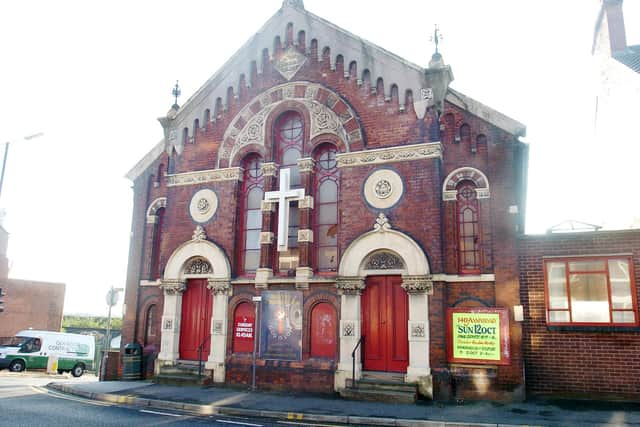Council must make sure 'stunning' Doncaster church is protected, says official
and live on Freeview channel 276
It follows the Government placing Balby Road Methodist Church on list of buildings of special architectural or historic interest, as a grade two listed building.
The authority’s cabinet member for public health, leisure and culture, Coun Nigel Ball said: “We are proud of the many culturally significant buildings within the borough and so were delighted that the Methodist Chapel on Balby Road has been listed.
Advertisement
Hide AdAdvertisement
Hide Ad“This was on the recommendation of Historic England to the Secretary of State for Digital, Culture, Media and Sport who has now added it to the List of Buildings of Special Architectural or Historic Interest.


“The Council now has the responsibility for protecting this building. Listed Building Consent is now required for any works that affect the ‘special interest of the listed building’ and considerations must also be made for any planning applications that impacts on it and its setting.”
Developers had been looking to knock down the 157-year-old Balby Road Methodist Church and Doncaster Council had already given developer, Surjit Duhre, permission to go ahead.
Advertisement
Hide AdAdvertisement
Hide AdYorkshire conservation campaigner Pete Nixon, had described the building as ‘stunning’ after hearing it was due to be demolished.
Granting listed status, Historic England gave four reasons why the building was of architectural interest. It added it was of historical interest because ‘the prominent location and exuberant appearance of the chapel demonstrates a pride and self-belief on the part of the aspirational, working-class congregation at a time when urban Doncaster was booming, driven primarily by the growth of engineering, particularly for the railways.’
Doncaster Council had previously approved demolition. Its conservation officer had said the history of the site and building had some external features but internally little of interest remained, and said there was not likely to be interested in listing the building.
A planning application for the developer, who wanted to build housing on the site, warned that with no current interest in the building itself, it could stand empty for years and fall into further disrepair.